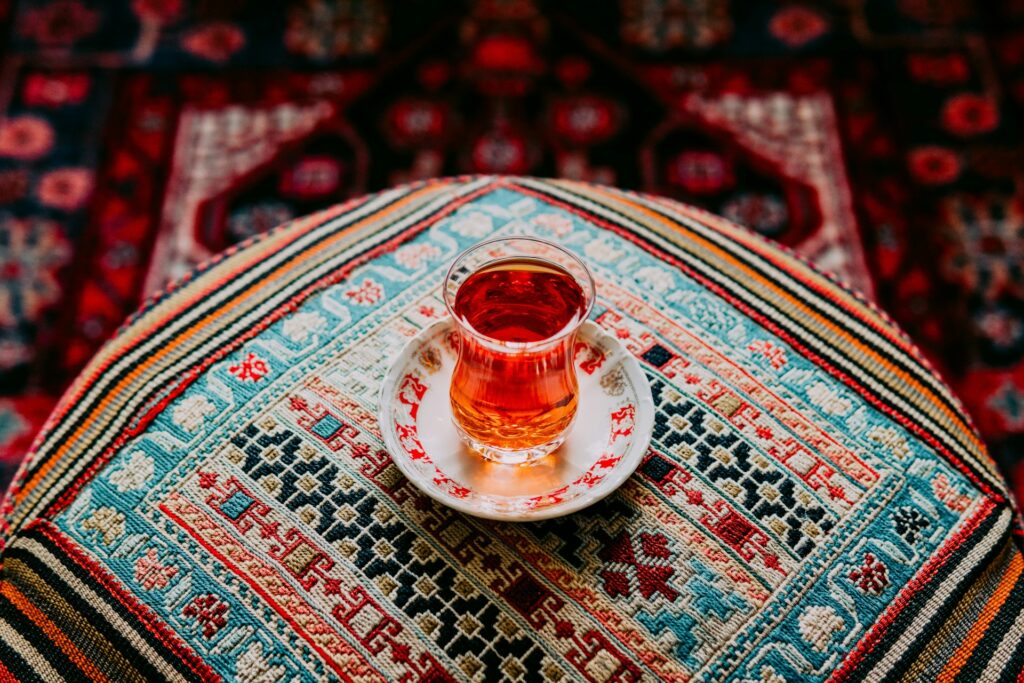Some people buy rugs and call it a day. Others fall down the rabbit hole of hand-knotted vs. machine-made, silk vs. wool, and suddenly they’re zooming in on patterns like it’s fine art. Sound familiar?
If you’ve ever seen rugs so detailed they felt like they belonged in a museum — or your grandma’s living room — you’ve probably come across a Persian rug. The name gets tossed around a lot, but what actually makes a rug “Persian?” And is it just a style or something more? Let’s dig in.
Where Did Persian Rugs Come From?
Persian rugs trace their roots back thousands of years to ancient Persia — what we now call Iran. We’re talking pre-iPhone, pre-empire-falling, BC levels of old. These rugs were originally woven for practical use — warmth, prayer, and floor coverings — but quickly became symbols of wealth, artistry, and cultural pride.
Over time, rug weaving became a serious craft passed down through generations. Different regions developed their own styles and techniques, and Persian rugs became known for how they looked and how much skill went into making them. Today, they’re considered one of the most respected and replicated forms of textile art in the world.
What Sets a Persian Rug Apart From Other Rugs?
There’s handmade, and then there’s hand-knotted. Persian rugs are traditionally made using this method, with weavers tying thousands (sometimes millions) of knots to create incredibly detailed patterns. That alone makes them stand out.
Persian rugs often use high-quality wool, silk, or a blend of both, dyed with natural plant-based ingredients. This results in colors that age beautifully and details you can spot across the room.
Look closely and you’ll see that the designs aren’t printed or glued but woven into the structure. Each rug can take months (or even years) to complete, and no two are exactly alike. It’s like owning a piece of functional art with a whole lot of history behind it.
Are All Persian-Style Rugs Actually From Iran?
Not exactly. While true Persian rugs are made in Iran using traditional techniques, the term “Persian-style” has become more of a design category than a strict origin label. You’ll see rugs made in India, Turkey, Pakistan, and even China that mimic Persian motifs, shapes, and colors.
The difference? Authentic Persian rugs are crafted in specific regions of Iran, often named after the city or tribe they come from, like Tabriz, Kashan, or Qom. Persian-style rugs may look similar, but they’re often machine-made or produced with shortcuts that lower the price (and the craftsmanship). So, while the label might be close, the story behind it is usually very different.
What Do Persian Rugs Typically Look Like?
Persian rugs are known for their intricate patterns, balanced symmetry, and rich colors. Think deep reds, navy blues, warm golds, and subtle earth tones. They are often woven into elaborate medallions, floral motifs, or repeating geometric shapes.
Each region has its own signature. Tabriz rugs often feature precise, curving floral designs. Heriz rugs lean bolder and more angular. Qom rugs are usually made of silk and are ridiculously detailed. Some rugs tell stories or include symbolic elements, like garden layouts or animals.
One thing most have in common: they’re never boring, and the more you stare, the more you notice. It’s the kind of detail that rewards a second (and third) glance.
How Do I Know If I’m Purchasing a Real Persian Rug?
Wondering if that “Persian rug” in your cart is the real deal or just really good marketing? We get it — when the price is low and the pattern looks legit, it’s easy to assume you’ve scored. But spotting an authentic Persian rug takes more than a quick glance.
Start with the back. A real Persian rug is hand-knotted, and the design will be just as clear on the back as it is on the front (though in reverse). You’ll also see slight imperfections — that’s a good thing. Machine-made rugs are too perfect.
Ask where it was made, what materials were used, and whether it has a tag or certificate indicating the region. And if it feels too good to be true price-wise? It probably is. A genuine Persian rug is an investment, not a steal.
The Takeaway
So, what’s a Persian rug? It’s a handmade piece crafted in Iran, built on generations of artistry, regional tradition, and cultural meaning. These rugs use time-tested techniques and natural materials to create something truly lasting.
If you own one, care for it like you would any meaningful investment. Rotate it now and then, vacuum without a beater bar, and get it professionally cleaned every few years. A Persian rug is a statement piece and a part of your home’s story. And with the right care, it can stay in that story for decades.




More Stories
Modern Minimalist Interior Design: Less is More
Patterns in Interior Design: Unlocking the Secret to Stunning Spaces
Quiet Luxury Interior Design: Transform Your Space with Subtle Elegance